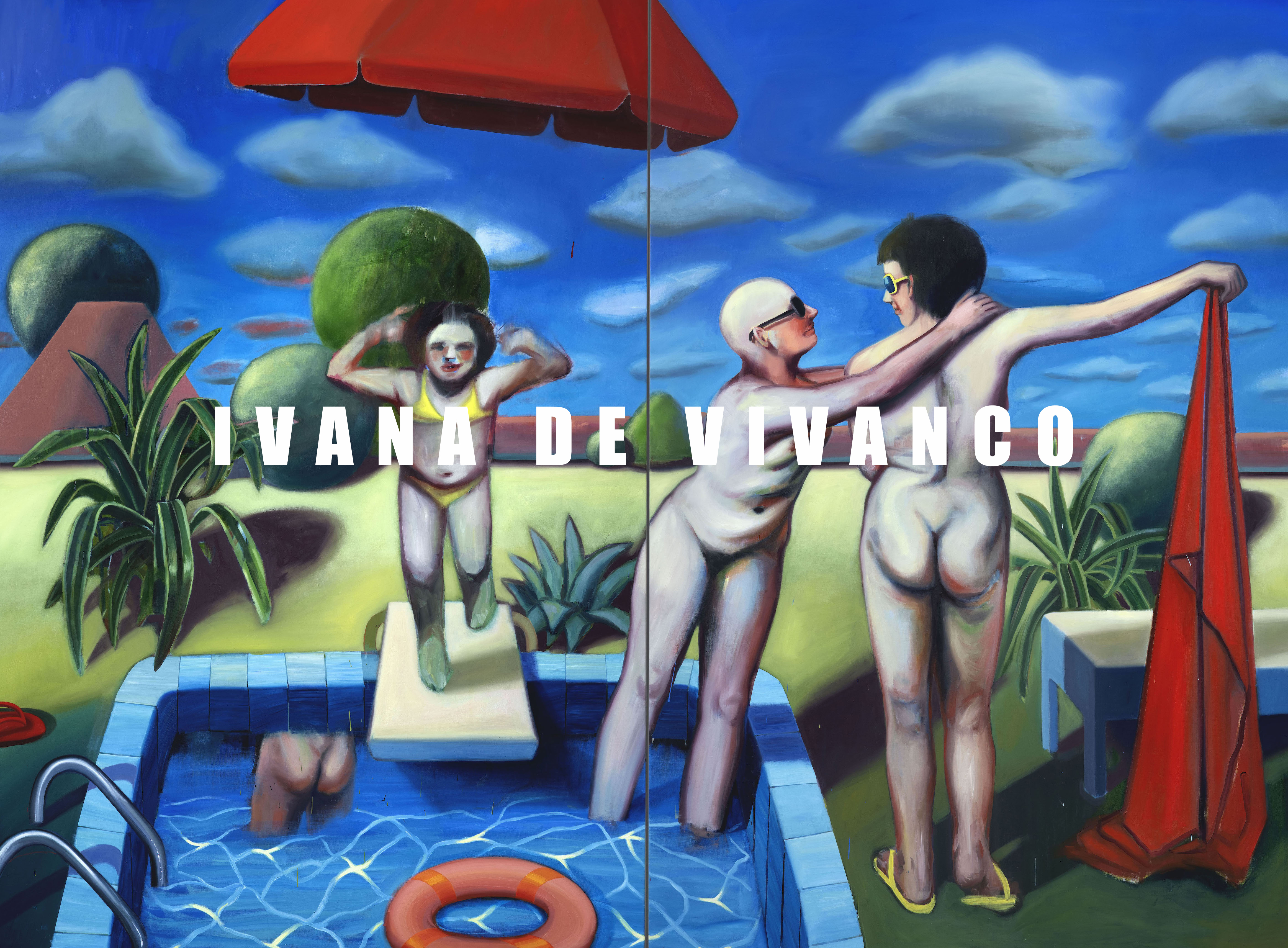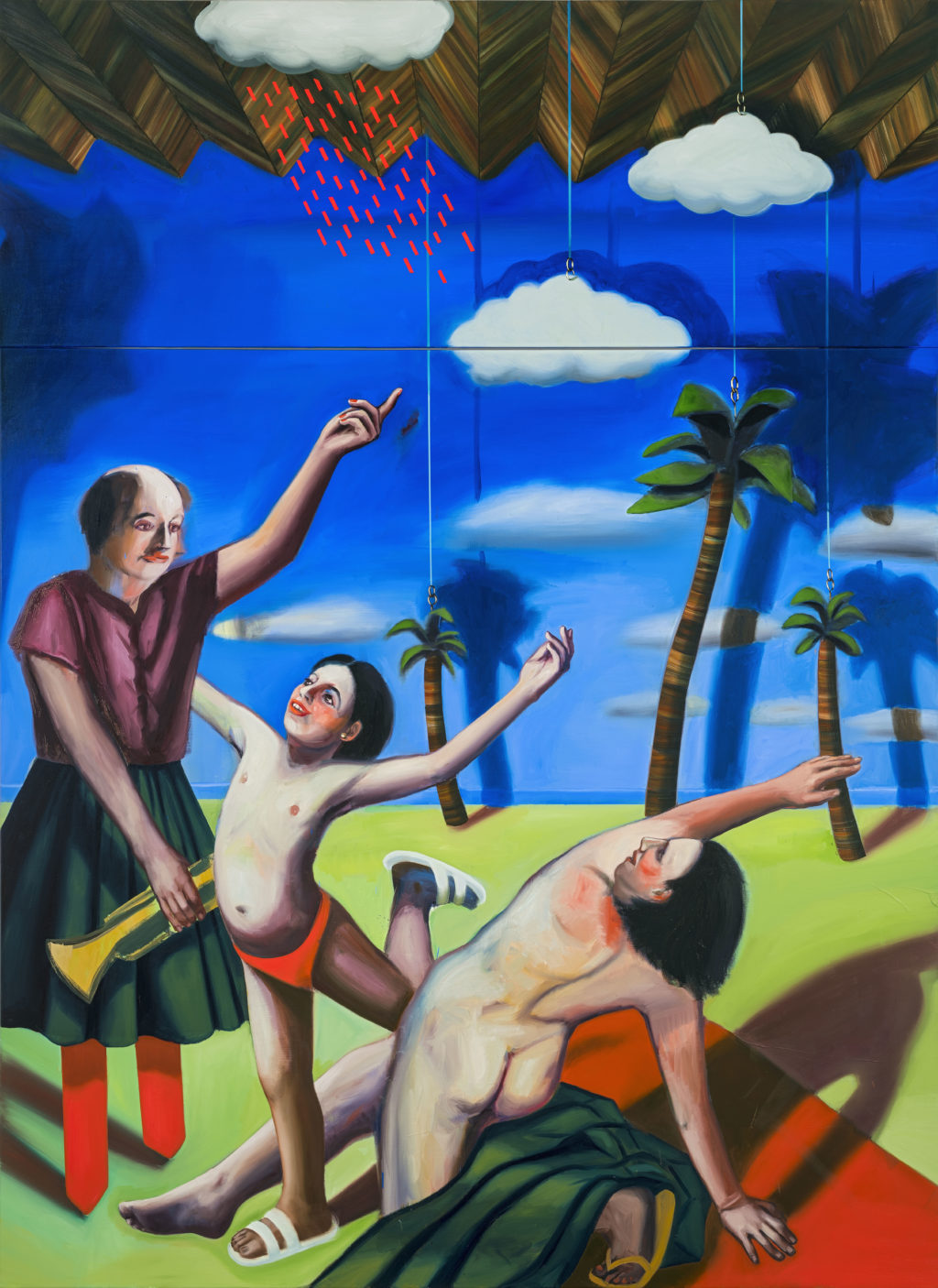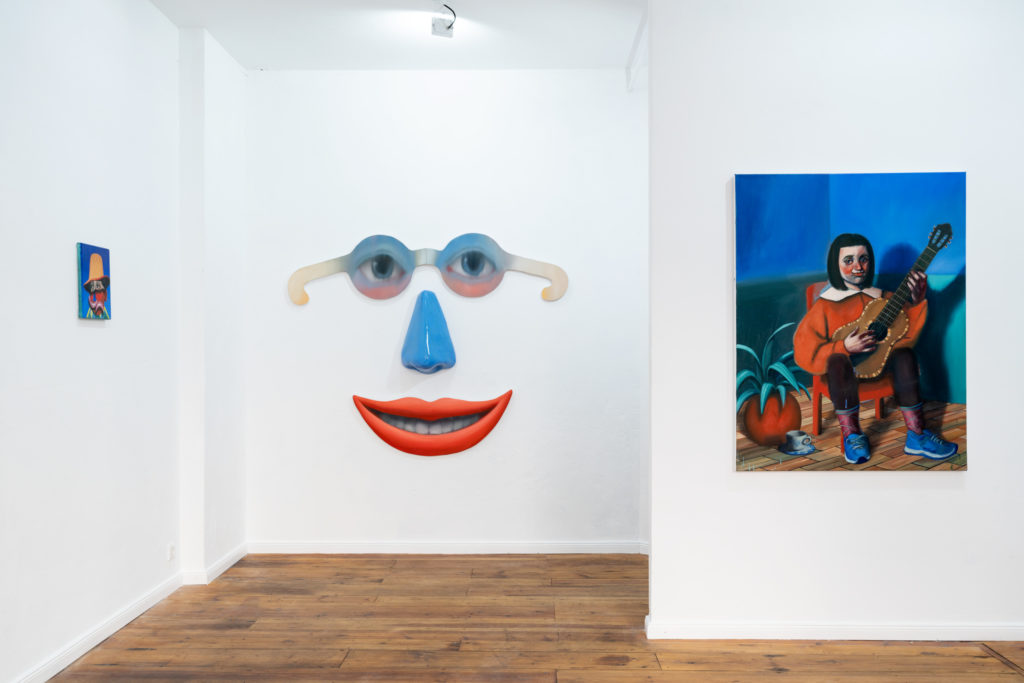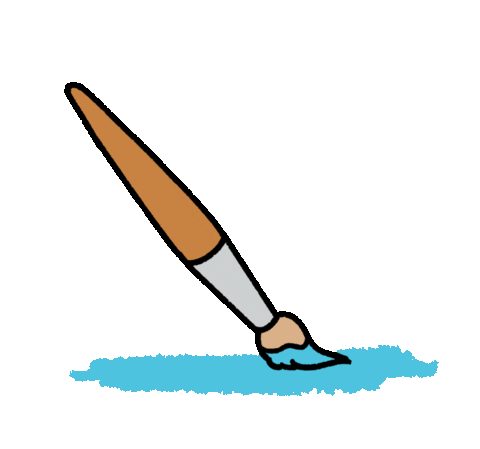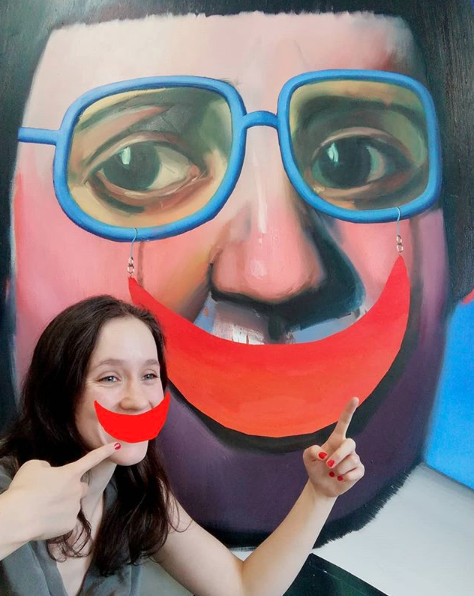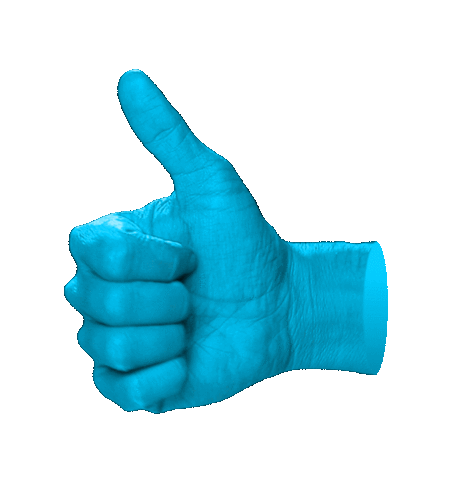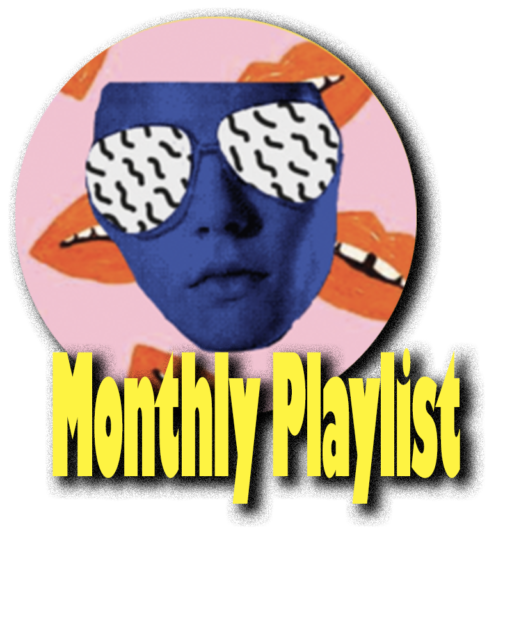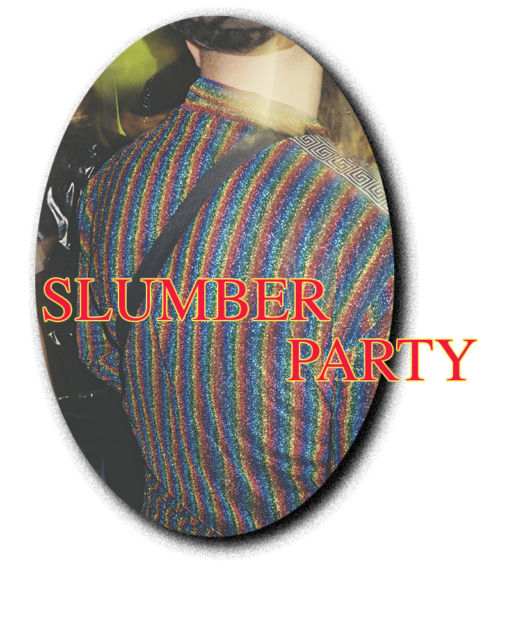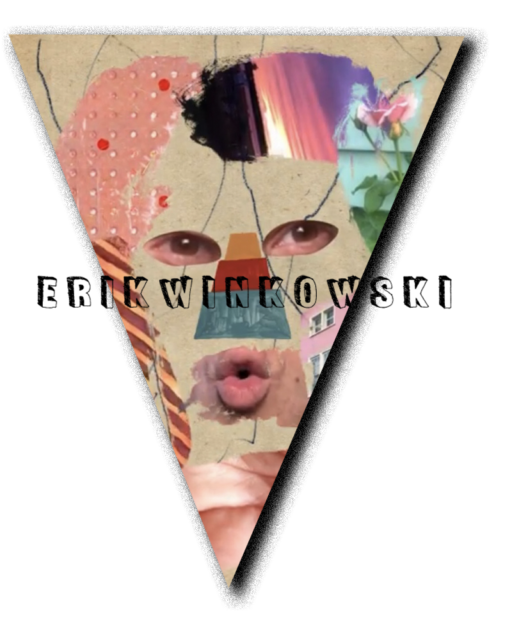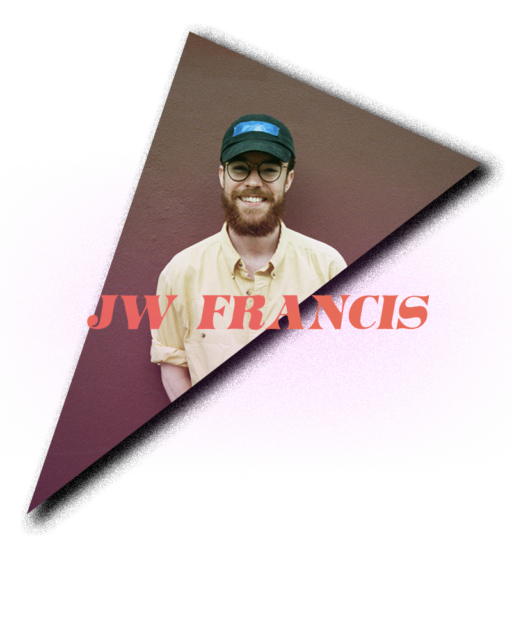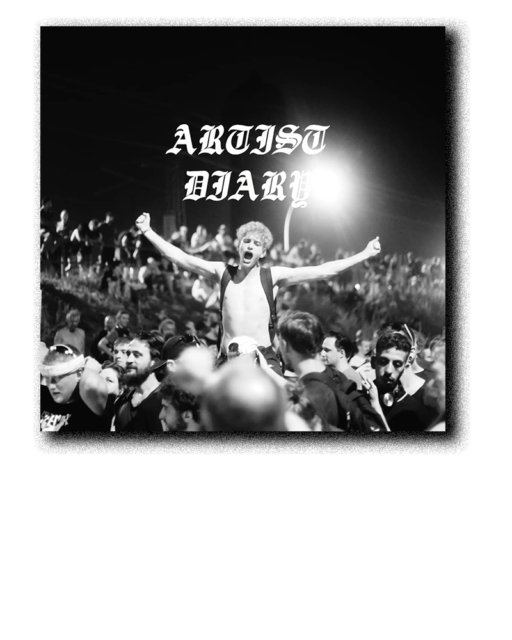This month’s MAI Wonder of the World is the lovely Ivana de Vivanco. Born in Portugal, the painter spent her childhood between Ecuador, Perú and Chile, before packing up and moving to Germany in her early twenties. We had a chat with Ivana about her ongoing Berlin debut and discussed how her nomadic life has inspired her artistic practice.
Hi Ivana! Congratulations on the exhibition in Weserhalle! It’s your first show in Berlin, correct?
Hi Clare, thank you! Yes, that’s right, the show at Weserhalle is my first solo exhibition in the German capital and that’s pretty exiting! In a way, my paintings and sculptures are losing their Berlin-virginity right now, because it’s the first time in which they are in direct contact with the public here. And it’s been hot stuff, haha! I really admire the work that Benjamin Hammond and the rest of the gallery’s team is doing, so I feel very honoured to be showing my work at Weserhalle.
How have you liked the city?
Oh, I’m in Berlin very often and I like it a lot. My works might be looking at their audience here for the first time these days, but I already have a long story with the city. I move a lot between Leipzig and Berlin; in Leipzig I have my atelier and a rather quiet and focused work atmosphere, but I need Berlin and a bit of its craziness to keep moving. I’m even planning to move here soon. The multifaceted character of this city — if I’m allowed to say that — is highly inspiring to me.
You’re from Santiago originally, but you are now based in Leipzig. What’s one defining difference between your hometown and where you now call home?
That’s a difficult question, because there are so many differences, that it’s hard to pick a defining one! Language, traditions, temperament, social structures, rhythm of life… To be honest, at the moment I can just think of the crisis that Chile is experiencing, a crisis that is shaking the whole country and of course manifests itself with special strength in the Capital.
My people are exhausted of a system that makes inequality every day stronger and deeper. Chile is probably the most successful victory of capitalism in Latin America with all the tragic consequences that this brings along. Everything is privatized; education, health, pensions, even water and 30% of wealth is in hands of 1% of the population. Rights have become a privilege for a few. In the last weeks millions of citizens have gone out to the streets to protest against this reality and they have been repressed by the authorities with a violence the country hasn’t experienced since the times of the fascist dictatorship of Pinochet. Not only police, but even military forces have been shooting at people on the street. Thousands have been arrested and hurt by guns. There are several deaths and many cases of torture and sexual violence of soldiers against the people. I think, the reasons that are moving people right now in Chile could draw an enormous difference between life in Santiago and in Leipzig or Berlin at the moment.
I came to Germany to continue studying art, after having finished my diploma at the University of Chile. The teachers there were great and the level of discussion we had was extremely high. If I had to choose again where to study I would definitely study art at my Alma Mater again. The material conditions of a public university there were of course diametrically different from the ones I had here in Germany, but we somehow got along. The aesthetic of our old faculty kind of fit the romantic imaginary of the artist freezing in an old attic and we used to wear warm gloves to paint in winter.We were a lot of students in small spaces and we were full of excitement about art and curious about the world. But you know, apart from those evident differences in terms of facilities for art students, there’s another difference that really impressed me when I came here to Germany. At the Art Faculty in Chile I always had the impression teachers where trying to convince us to abandon our art studies; “Are you really, really, really sure you want this? What you’re doing is not good at all! Who is going to be interested in this painting? What do you want to tell us, you little bourgeois art student?”. I suppose they were somehow trying to prepare us for a harsh reality out there — outside of the Art Faculty. Here, at the Art School in Leipzig the situation was so different; students were treated kindly, they were even motivated by the professors to keep going, even in the cases where the students where not motivated enough themselves! Maybe is more difficult to be an artist there, in Latin America, because of the urgency of other social issues and maybe this little story shows something of a difference between both cities. I don’t know.
How does each city influence your work?
That’s a good question. It’s difficult to tell you exactly in which way each city influences my work, but of course every place in which I have lived and worked has left a trace — without a doubt.
I have had a quite nomadic life so far. I was born in Portugal, where I spent the first three years of my life, I grew up in Ecuador, Perú and Chile and almost seven years ago I moved to Germany.
Sometimes I can recognize specific aspects of each city that have influenced my work, like the Latin American Baroque from Quito and Cusco, for example. I grew up looking at those paintings and sculptures and visiting so many churches from that time, so there’s a lot of that in my works. But, you know, I cannot always really tell what I take with me from each experience in all the places I have been, but I definitely take something.
Maybe the fact of moving around so much when I was a kid determined my way of thinking and looking at things. It would be naïve to think that those experiences and structures from our history don’t have an impact in our artistic practice. Gombrich had his reasons to say in the very first page of his Art History, that the history of art is actually the history of the artists. And even if this line is in a way a bit exaggerated and I wouldn’t agree completely, there’s definitely something true in it. We could say then, that the history of the works is also connected somehow with the history of the city in which they are born.
Your work is also inspired by the likes of Goya and Bacon, both distinctly different artists from different eras of painting. What period of Art History are you most interested in and why?
Oh, there are so many periods that fascinate me, that it’s really hard to pic one! Baroque has been always important to me. That’s a period in which sooooo much is going on and it manifests itself so differently in each country. I really love how composition is often over the top at that time! I have also been obsessed with modernism, but you know, it’s a well-known problem that the beginning of this period is difficult to determine: some see one of its founders in Velazquez, some place its roots already in Lascaux! But anyway, I admire painters like Manet and books from that same time like Madame Bovary and Anna Karenina. There’s something radical in those art works, in a period in which for example the majority of painters thought they had reached, mastered and displayed all the technical and visual possibilities of their medium. But no, no, no! Artists like Manet or Cézanne come and give painting a turn of the screw. They review art history and at the same time, through that tradition, they announce something new.
Oh… Goya and Bacon and their times! I haven’t talked of that. Very exiting periods in the arts as well, but I should stop, because if I don’t I will never end!
Besides other painters, what inspires your work?
Music, a good dance in the studio at the beginning of the day, travels, good conversations with people I admire, literature and other things of life!
What does a typical day in the studio look like for you? What is the process behind your paintings?
Probably it would be much cooler to tell you that I’m the bohemian type who goes for a drink early evening and then works the whole night, but that wouldn’t be the truth, haha! To be honest I’m pretty nerdy with my routine: I wake up early, go to the studio and then I finish around dinner time. And even if what happens during those hours is sometimes pretty adventurous, most of the times one has to just persist and sweat until something starts working on the canvas. Painting is a complex but, of course, exciting process. It wouldn’t be exciting if it wouldn’t be complex. When I get used to something in the studio and start getting comfortable with what I’m doing, I know that I have to change something.
The creative process for me is really about fighting so hard to get to the point in which you master something and when you are finally there and you start feeling at ease with it, you have to partially abandon it. It’s hard work!
Have you any more exciting upcoming shows? What are your plans for the future?
Oh yes, I have a bunch of exciting shows coming up. The next one will be in January 2020 at the Kunsthalle Darmstadt. I’m exhibiting some paintings and sculptures there with four other cool young artists. You shouldn’t miss that, if you’re around!
Regarding the future… wow, what a difficult and uncertain concept! The only thing I can really assure is that I will keep working intensely in the studio. Other things are uncertain, but not my will and conviction in my work. I need to keep going!
What is something you need before, during and after your artistic process?
Lots of patience, perseverance and courage.
What is your most treasured possession?
I don’t know, that’s a difficult question. I suppose my life as it is with all the people I love and that support me. But actually that’s not a possession, is it, because I’m not completely in control of my life — nobody is. And people are always free to come and leave, even if one doesn’t want them to.
So probably the only thing one really owns is the capacity to choose. Yes, that’s probably the most important possession I have — my choices, my free will.
If you could invite 3 people to one of your shows – dead or alive – who would they be and why?
Oh my god, just three! Ok, let’s see…
I would probably invite David Hockney. I really admire the way he looks at paintings and talks about art. I would definitely invite Velázquez. Yes — I would be so curious to know what a genius of painting would say about my work. And would of course invite Cervantes, my very first literary idol. I have always identified with his Don Quijote and I would love to talk with him about the battle of painting, in which one feels that one can change the world with brush and palette, but in which one soon realizes that the studio-battlefield is a lonely place, where one is clumsy and at the same time full of hope. Clumsiness combined with the highest ambitions. Yes, I would love to talk with Cervantes about that.
Thanks, Ivana!!
Interview by Clare Davies
